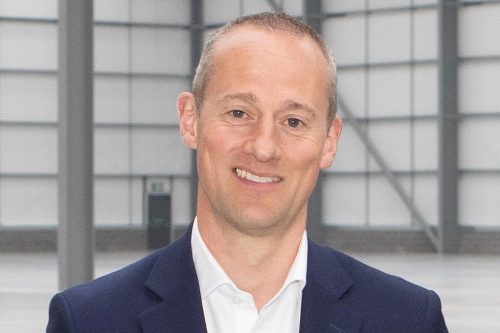North West big box logistics take-up on a par with last year’s record figures

Take-up for big box (100,000 sq ft+) logistics space in the North West this year is on track to outperform the 10-year average, says the latest research from global real estate advisor, CBRE.
And the figures for 2022 are on a par with 2021, which was a record year.
Logistics take-up year-to-date in the region now sits at 4.7 million sq ft. The post-pandemic trend of higher levels of speculative take-up in the North West continued with three speculative deals in the third quarter – 0.8 million sq ft was under offer at the end of the quarter, the lowest level since quarter three 2020.
Nationally, take-up of logistics space totalled 7.67 million sq ft for quarter three 2022. The aggregate for the first nine months of 2022 stands at 30.25 million sq ft, which equates to 95.8% of 2021 and 92.1% of the record-breaking year of 2020 for the same period, signalling the sector’s resilience.
This represents a decrease of 30% compared with Q3 2021, which saw take-up reach 10.9 million sq ft.
A total of 29 deals have completed this quarter, a decrease of 25.6% compared with Q3 2021, which saw 39 deals complete. Speculative schemes accounted for almost half of total take-up at 46.9%, followed by build-to-suit at 34.7% and second hand accounting for the remaining 18.4%.
Third-party logistics dominated at a sector level, accounting for 56.3% of total take-up for the quarter.
This was followed by retail at 21.3%. The remaining 22.4% was split across supermarkets, manufacturing, motor and other, demonstrating that demand for logistics space is wide-ranging and that competition for units remains strong.
Take-up was widespread across the regions for the quarter. Yorkshire and North East led the way at 27.1%. This was followed by West Midlands at 20.7%, East Midlands at 19%, South East at 16.3%, North West at 9.3% and the South West at 7.5%.
Availability in the North West grew to 2.9 million sq ft, up 214% quarter to quarter, driven by the big uptick in speculative space under construction.
The vacancy rate rose to 1.01%, from 0.23% in Q2, due to three second hand units coming to the market and some speculative space completing.
However, it is still the lowest vacancy rate of any UK region. North West prime rents increased in Q3 to £8.25 psf, up 10% year on year. Prime big box yields moved out by a further 75bps to 4.50%.
Nationally, vacant available space increased from 5.73 million sq ft at Q2 2022 to 6.51 million at Q3 2022.
This was due to a number of speculative buildings reaching practical completion during the quarter. However, with only 21 built speculative units available, there remains a significant under-supply. The increase in completed units resulted in the UK vacancy rate increasing fractionally from 1.18% to 1.32%.
Paul Cook, senior director, CBRE Manchester, said: “Occupational demand continues to remain strong in the North West region, but with limited supply of existing space and likely slow down in speculative development, we are possibly going to see a further increase in rents moving into 2023. Big box take up in 2022 is on track to outperform the 10 year average take up figures and is on par with 2021, which was a record year.”
Jonathan Compton, senior director, UK logistics at CBRE, said: “Despite the ongoing economic uncertainty, the logistics occupational market remains strong with a wide range of occupiers securing space across the country. The decrease in take-up this quarter points to a degree of normalisation in the market following a prolonged period of record-breaking numbers, however the under-offer pipeline signals towards another robust year for the sector.”
Annabel Nash, senior analyst, UK logistics research at CBRE, said: “We have seen a significant shift in the type of occupier taking space following a dominant display from online retail.
“Third-party logistics providers are now leading the pack, accounting for more than a third of total take up year to date. Ongoing supply chain and shipping disruptions are resulting in longer lead times, driving retailers to extend their stock profile in the UK.
“Therefore, companies that do not have the sufficient infrastructure are turning to third party logistics providers for fulfillment on their behalf.”








